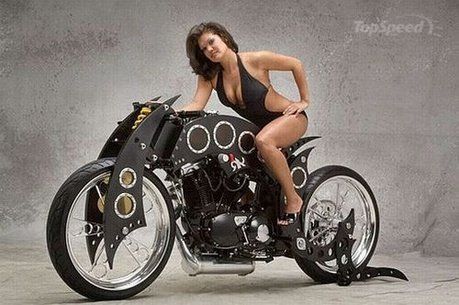 I picked up this book at Brooklands, where the author, David Dixon, was sitting in the entry of the museum, signing copies. Dixon wrote for 'The Motor Cycle' from the 50's onwards, and was a good friend of Lawrie Watts, who is best known as a 'technical artist' - that is, he created those amazing line drawings of engines and whole motorcycles, cars, planes, boats, etc, which allow you to see exactly how something is put together from the inside out.
I picked up this book at Brooklands, where the author, David Dixon, was sitting in the entry of the museum, signing copies. Dixon wrote for 'The Motor Cycle' from the 50's onwards, and was a good friend of Lawrie Watts, who is best known as a 'technical artist' - that is, he created those amazing line drawings of engines and whole motorcycles, cars, planes, boats, etc, which allow you to see exactly how something is put together from the inside out.Which might not sound like gripping subject matter, but with a little reflection it becomes clear that this fellow was allowed access to the newest and most innovative machinery in his day, and bumped into everyone involved - the designers, the racers, the industry titans, the mechanics - and they all make for a terrific set of stories.
For example, he was on the Isle of Man in 1960, going directly from parties to watch 5am practice (!), and lurking around the various race team depots, which unlike other GP circuits, are usually in hotel garages and private homes, and are thus fairly accessible, or at least more
 difficult to keep secure from the prying eyes of interested journalists. The Honda team, in only its second year at the Island, had its HQ at the Nursery Hotel in Onchan. From a 'non-intrusive' distance, Lawrie took photos of the bikes (shown), their new 4-cyl 250cc dohc racers.
difficult to keep secure from the prying eyes of interested journalists. The Honda team, in only its second year at the Island, had its HQ at the Nursery Hotel in Onchan. From a 'non-intrusive' distance, Lawrie took photos of the bikes (shown), their new 4-cyl 250cc dohc racers.Here's how Dixon tells it: "As Lawrie ostentatiously pocketed his sketch pad and photographer Geoff Riden packed his new Pentax 35mm camera, the Japanese ambled away for their morning green tea break. For want of anything better to do, I poked a finger up an exhaust port, and felt something odd. Instead of
 being circular, the inner end of the port was divided in two! 'Lawrie, what do you make of this?' I asked. The expression on his face confirmed my suspicions...the engine had two exhaust valves per cylinder, that's why the port was bifurcated!...Lawrie drew some layouts of the cylinder head to test the reactions of the secretive, non-English speaking Japanese. At the first two sketches, they smiled politely. But their astonishment at the third sketch, a schematic 4 valve layout, spoke volumes. Now Lawrie needed to know what type of layout; parallel, vertical, or radial valves? so he produced a packet of Opal fruits [Jujubes to us Yanks - p] and offered them around. Politely, the mechanics accepted. Between munching happily on sweets, they helped to fill in the essential details of
being circular, the inner end of the port was divided in two! 'Lawrie, what do you make of this?' I asked. The expression on his face confirmed my suspicions...the engine had two exhaust valves per cylinder, that's why the port was bifurcated!...Lawrie drew some layouts of the cylinder head to test the reactions of the secretive, non-English speaking Japanese. At the first two sketches, they smiled politely. But their astonishment at the third sketch, a schematic 4 valve layout, spoke volumes. Now Lawrie needed to know what type of layout; parallel, vertical, or radial valves? so he produced a packet of Opal fruits [Jujubes to us Yanks - p] and offered them around. Politely, the mechanics accepted. Between munching happily on sweets, they helped to fill in the essential details of the valve configuration. As a bonus, they indicated that 4 valves per cylinder had been used in their 125cc twin-cylinder engines the previous year (1959), though nobody outside the factory knew. Back at our London office, our 'scoop' got a frosty reception from Technical Editor, Vic Willoughby,...'That's old hat, tell them Rudge and Excelsior gave up on that idea 30 years ago...' "
the valve configuration. As a bonus, they indicated that 4 valves per cylinder had been used in their 125cc twin-cylinder engines the previous year (1959), though nobody outside the factory knew. Back at our London office, our 'scoop' got a frosty reception from Technical Editor, Vic Willoughby,...'That's old hat, tell them Rudge and Excelsior gave up on that idea 30 years ago...' "There are similar anecdotes throughout the book. Watts became an avid sailplane pilot, and the photo below shows a real mix of his passions; a Honda CB92, Bob Currie (founder of 'The Classic Motorcycle') on a Royal Enfield twin, Watts looking into a glider, and on the right, the RE 'Dreamliner' which Watts helped design. This futuristic (for 1957) design grew from Watt's involvment creating the streamlined bodywork for World Champion Eric Oliver's Norton sidecar racer. Watts mused that it would make a good road bike, and worked with Enfield's to create a new shape around their Bullet. It came at a bad moment though, as the FIM banned 'dustbin' streamlining on racing machines in '57, as being unstable in high winds and thus dangerous for racing.

Loads of such reflections, about people like Bob MacIntyre, Joe Craig, Helmut Fath, etc, make the book a fascinating read.
'Watt's My Line?'; The Life and Work of Editorial Artist, Lawrie Watts' by David Dixon, is published by Redline Books. www.redlinebooks.co.uk








No comments:
Post a Comment